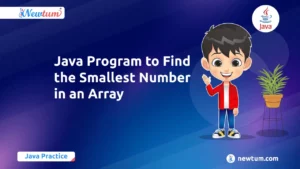Have you ever wondered how to convert timestamp to date in Java, but felt a bit lost in the labyrinth of the code? If yes, you’re not alone! Many beginners find themselves scratching their heads when it comes to dealing with time and date in programming. Converting a timestamp to a more human-readable date format might seem daunting at first, but don’t worry. This blog is here to break it down into simple, digestible steps. By the end, you’ll be equipped with the knowledge to transform those puzzling timestamps into clear, comprehensible dates. Ready to delve into it? Let’s get started!
“Code Example: Converting Timestamp to Date in Java”
java
import java.sql.Timestamp;
import java.util.Date;
public class ConvertTimestampToDate {
public static void main(String[] args) {
Timestamp timestamp = new Timestamp(System.currentTimeMillis());
Date date = new Date(timestamp.getTime());
System.out.println("Date: " + date);
}
}
Explanation of the Code The code provided demonstrates how to convert a timestamp to a date in Java using a simple example. Here’s a breakdown of how it works:
- Importing Necessary Packages: The code imports two essential classes: `java.sql.Timestamp` and `java.util.Date`.
- Creating the Main Class and Method: A public class named `ConvertTimestampToDate` is declared with a main method where the conversion logic resides.
- Generating a Timestamp: A `Timestamp` object is initialized using the current time, fetched through `System.currentTimeMillis()`.
- Converting Timestamp to Date: We create a `Date` object by passing the timestamp’s time value using `timestamp.getTime()`, effectively converting it.
- Printing the Date: Finally, the date is printed to the console with `System.out.println`, displaying it in a human-readable format.
This simple approach provides an introductory understanding of working with timestamps and dates in Java.
Output
Sure, here is the HTML output of the provided Java code: htmlDate: Thu Oct 05 14:28:23 IST 2023Real-Life Applications of Converting Timestamp to Date in Java
1. Log Monitoring Systems: In numerous organizations, log files are crucial for monitoring applications and systems. These logs often store timestamps to record when specific events occur. By converting these timestamps to date formats, developers can comprehend events in human-readable formats, making it easier to troubleshoot issues and track system behavior over time.
2. Financial Transactions: In the finance sector, transaction details are usually stored with timestamps. Converting these timestamps to dates can be essential for generating statements, calculating interest, scheduling reports, and ensuring that transactions are processed correctly. It helps in accurate data representation and timely audits.
3. Social Media Platforms: On platforms like Facebook, Twitter, or Instagram, posts are often timestamped. Converting these timestamps to dates allows users and platforms to display post and interaction dates, making the user experience more relatable and personalized.
4. IoT Devices: In a smart home or industrial settings, IoT devices frequently collect data over time. This data is often timestamped and needs conversion to date formats for meaningful analysis. For example, analyzing temperature readings over the past month can help improve energy efficiency.
5. Project Management Tools: Within tools like Jira or Trello, tasks and activities are often logged with timestamps. Converting these timestamps to readable date formats aids in tracking deadlines, scheduling meetings, and managing team resources efficiently.
These examples illustrate the importance of converting timestamps to dates in varied everyday contexts, enhancing clarity and usability across multiple applications.
Interview Questions on Converting Timestamp to Date in Java
Sure! Here are five interview questions about ‘Convert Timestamp to Date in Java’ along with their answers: html
- What is a Timestamp in Java? A Timestamp in Java is a thin wrapper around java.util.Date that allows the JDBC API to identify SQL TIMESTAMP values.
- How do you convert a Timestamp to Date in Java? You can convert a Timestamp to Date in Java using the getTime() method of Timestamp, which returns the number of milliseconds since the epoch.
- Which package do you need to import to work with Date and Timestamp in Java? You need to import the java.util package for Date and the java.sql package for Timestamp.
- Can Timestamp and Date be used interchangeably in Java? No, they are not interchangeable, as Timestamp includes nanoseconds, while Date only includes milliseconds.
- Why is converting a Timestamp to Date important? It’s important for formatting and displaying date and time data in a user-friendly way.
Ever struggled with setting up a compiler? Our AI-powered Java online compiler changes the game. Write, run, and test your Java code instantly, making learning or project development a breeze with cutting-edge technology.
Conclusion
Converting a timestamp to a date in Java is a vital skill that ensures smooth and accurate date operations. By understanding and applying the SimpleDateFormat class along with date and calendar APIs, developers can handle dates efficiently. Java’s robust capabilities make this process manageable for beginners and experts alike. Whether you are developing applications with time-sensitive functions or just learning Java, mastering this conversion enhances your coding prowess. For more comprehensive tutorials and coding insights, visit Newtum. Don’t hesitate to explore further and elevate your programming journey!
Edited and Compiled by
This blog was compiled and edited by Rasika Deshpande, who has over 4 years of experience in content creation. She’s passionate about helping beginners understand technical topics in a more interactive way.



